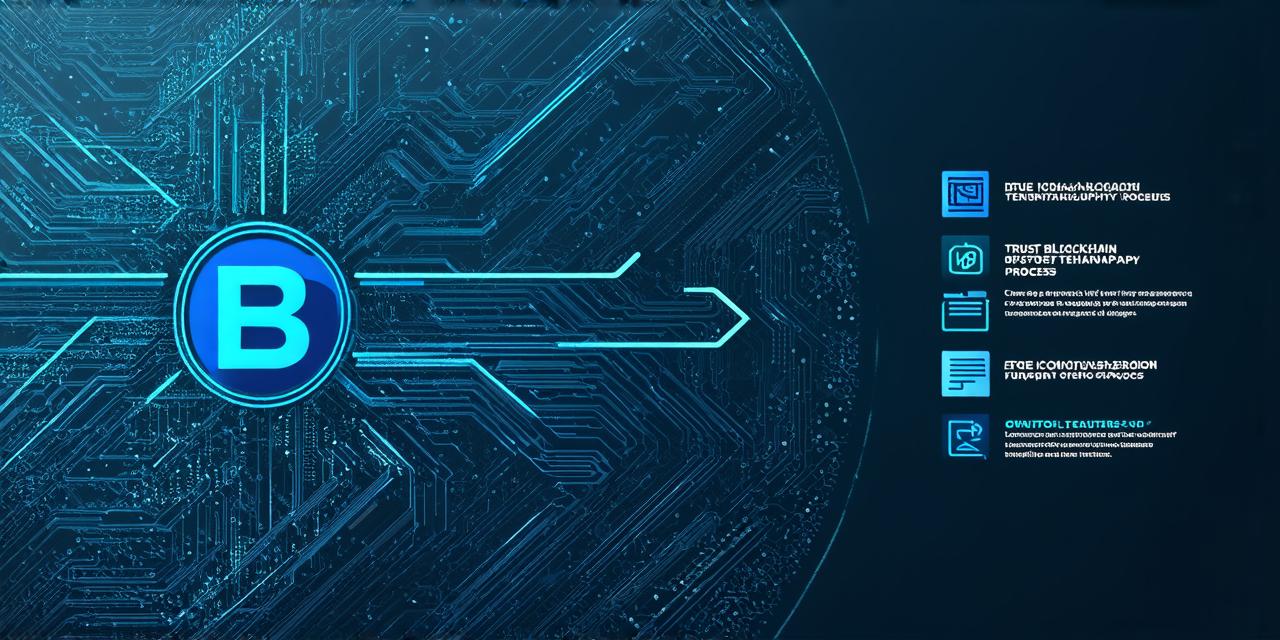How blockchain verification works
Introduction
Blockchain technology has taken the world by storm since its inception, with applications ranging from cryptocurrencies to supply chain management and beyond. One of the key components of blockchain is verification, which ensures that all transactions on the network are legitimate and secure.
What is Blockchain Verification?
Blockchain verification is the process by which a network of nodes or computers confirms that transactions on the network are valid and meet certain criteria before they are added to the ledger. This process helps maintain the integrity of the blockchain by preventing fraudulent transactions and ensuring that all participants have access to the same data.
There are two main types of verification in blockchain: proof-of-work (PoW) and proof-of-stake (PoS). PoW requires miners to compete to solve complex mathematical problems, while PoS relies on a consensus algorithm that validates transactions based on the stake or contribution of each participant.
Importance of Blockchain Verification
The importance of blockchain verification cannot be overstated. It is what ensures the security and integrity of the network, and it is what makes blockchain so trustworthy and resistant to tampering. Without verification, transactions could be manipulated or falsified, leading to financial losses and other negative consequences.

Moreover, verification helps prevent fraudulent activities such as double-spending and Sybil attacks. Double-spending refers to the practice of spending the same cryptocurrency more than once, while a Sybil attack involves creating multiple fake identities in order to manipulate the network.
How Blockchain Verification Works
The process of blockchain verification involves several steps, including:
- Transaction broadcasting: When a user initiates a transaction on the blockchain, it is broadcast to all other participants in the network.
- Verification: Each participant in the network verifies that the transaction meets certain criteria, such as being within the user’s balance and meeting any other rules or regulations specified by the network.
- Validation: Once a transaction has been verified, it is added to the blockchain ledger and propagated throughout the network.
- Mining: In PoW networks, miners compete to solve complex mathematical problems in order to validate new blocks of transactions and add them to the blockchain.
Case Study: Bitcoin’s Verification Process
Bitcoin is perhaps the most well-known example of a blockchain network with verification at its core. The Bitcoin network uses PoW to validate transactions, with miners competing to solve complex mathematical problems in order to create new blocks of transactions and add them to the blockchain ledger.
When a user initiates a transaction on the Bitcoin network, it is broadcast to all other participants in the network. Each participant verifies that the transaction meets certain criteria, such as being within the user’s balance and meeting any other rules or regulations specified by the network. Once a transaction has been verified, it is added to a block of transactions and miners compete to solve complex mathematical problems in order to validate the new block and add it to the blockchain ledger.
Personal Experience: Building a Verification System for Smart Contracts
As a blockchain developer, I have had the opportunity to build verification systems for smart contracts. These systems rely on a consensus algorithm that validates transactions based on certain criteria, such as meeting certain conditions or being signed by authorized parties.
In order to build an effective verification system, it is important to carefully consider the rules and regulations of the network and to test the system thoroughly to ensure that it works as intended. Additionally, it is important to continuously monitor and update the system in order to address any security vulnerabilities or performance issues that may arise.
Improving Blockchain Verification for Better Security and Performance
There are several ways that blockchain verification can be improved for better security and performance. These include:
- Increasing the number of nodes in the network to improve decentralization and reduce the risk of attacks
- Implementing advanced consensus algorithms, such as Byzantine Fault Tolerance (BFT) or Practical Byzantine Fault Tolerance (PBFT), to ensure that transactions are validated by a majority of nodes in the network
- Improving the efficiency of the verification process through techniques such as batch processing and sharding, which can reduce the amount of computational resources required for validation



